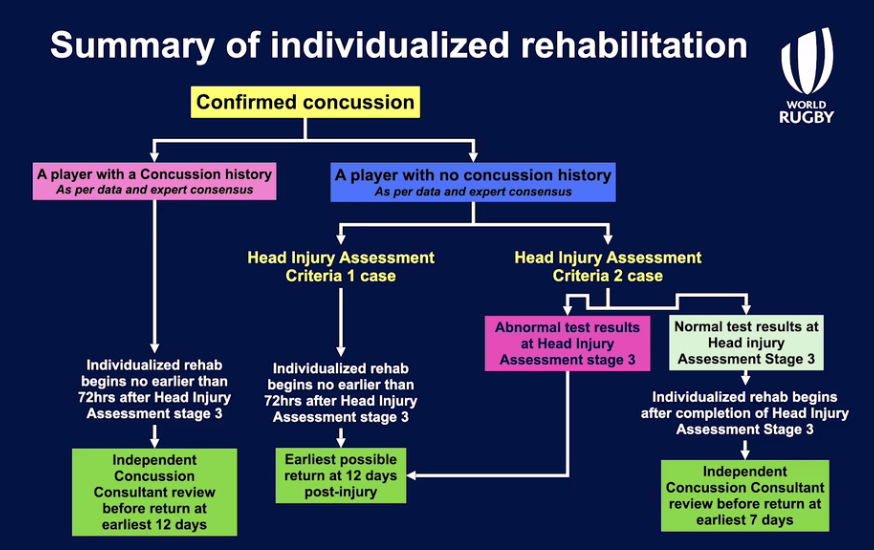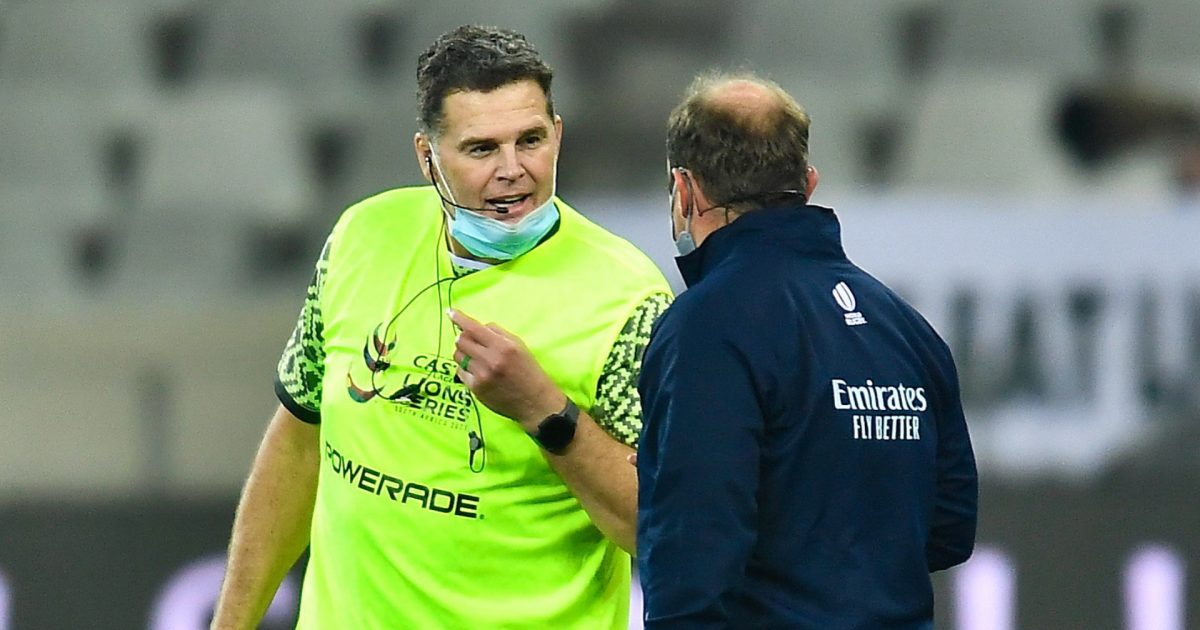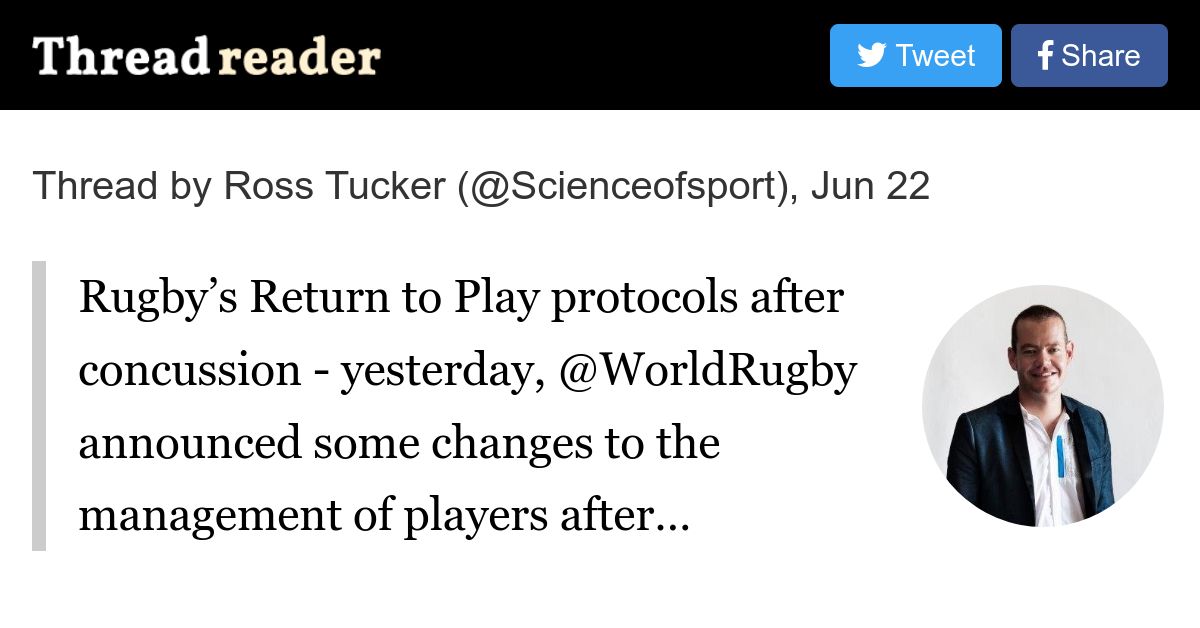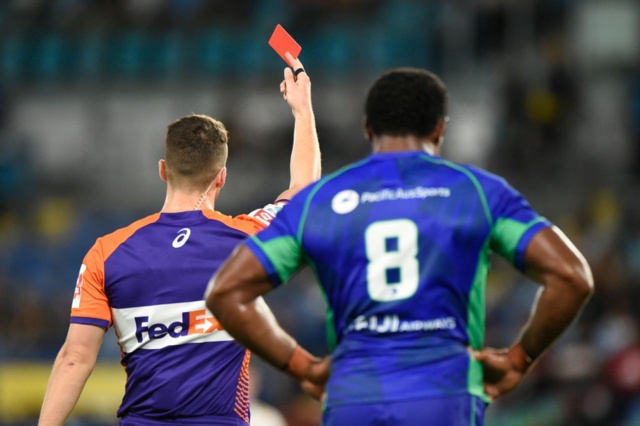Law trials and changes
-
Something else, decided a few days ago:
World Rugby confirms adoption of welfare-driven laws
World Rugby Council has today voted unanimously to adopt five welfare driven global trials into full law from 1 July. The new laws mean that the upcoming women’s and men’s Rugby World Cups will feature the current package of global welfare-driven law trials including 50:22 and the goal line dropout.
With rugby united in its mission to be the most progressive sport on player welfare, the package of five laws have all been approved with welfare advancement in mind and following a global trial period of one year where every player at all levels has been able to play under them and have their say.
The scrum brake foot, trialed in this years’ Six Nations Championships, will move from a closed to global trial, meaning it will also feature at the men’s and women’s Rugby World Cups in 2022 and 2023.
World Rugby’s Laws Review Group and High Performance Rugby Committee made the recommendations to the World Rugby Council following detailed analysis of welfare and shape of the game data as well as feedback from the Game, including players, coaches, match officials, medics and public.
All five trials were deemed to have positively enhanced both safety and spectacle and were unanimously approved by the Council. They are:
• 50:22• Pre-Bound Pods of Players (or “Flying Wedge”)
• Sanctioning of lower-limb clearout
• Latching
The Council also approved minor amendments to the laws to accommodate the rulings on law clarifications raised by member unions since 2020, adding clarity to the respective areas of law.
Approval of the new laws builds on the package of Game On Community Law Variations providing national unions with the ability to implement modified laws at a domestic mass participation level. Allowing each union to further game experience and safety for participants by meeting the specific needs of the game in their nation. Unions can pick and choose from dependent on their context and purpose.
World Rugby, fully supported by member unions, competitions and players, will continue to evaluate the impact of the new laws against the central objective of supporting positive welfare outcomes, including head injury prevention, as the only sport that gathers and publishes game-wide injury data.
Following representation from member unions and player groups, there will be a renewed focus on side entry by both attacking and defending players at the breakdown. This reinforces player protection and safety and ensures a fair contest for the ball in this dynamic area of the game. This will come in the form of a Law Application Guideline to be confirmed at the international match officials camp to be held ahead of the July international fixtures.Council’s approval brings to a close a process that began with union submissions on potential welfare-focused law amendments at the 2018 Player Welfare and Laws Symposium in France.
Those deemed by the dedicated Laws Review Group to be the most effective were progressed through a programme of detailed evaluation and feedback (including public consultation) before closed law trials were approved in 2020 before the most impactful progressed to global law trials in July 2021. -
@Machpants said in Law trials and changes:
I like these new laws, a good starting point. For me water should be available at the sideline, help yourself whenever, but the game doesn't stop.
Great news. Not sure why they stopped at 'head coach' though. Usually it is an assistant coach sent on with messages.
Currently refs look really weak demanding that water carriers leave while they are totally ignored. -
World Rugby media release:
World Rugby evolves approach to return to play from brain injury in the elite game
- Vast majority of players diagnosed with concussion likely to miss their next match owing to new criteria
- Any player eligible to return to play on the seventh day after injury would only do so with the approval of an independent concussion consultant
- Changes implemented globally from 1 July following recommendations by World Rugby’s independent Concussion Working Group
- Stand down periods remain for community game where there is no full-time medical supervision
World Rugby is evolving its Graduated Return to Play (GRTP) protocols for the elite game following the latest review of scientific evidence and rugby-specific research by federation’s expert independent Concussion Working Group.
Underscoring World Rugby’s commitment to establish rugby as the most progressive sport in the world on player welfare, the evolved approach will see players, including those with a history of concussion or who are removed from a match with obvious concussion symptoms, sit out from play for a minimum of 12 days, likely missing their next competitive match.
No player will return earlier than the seventh day after injury, and any player’s return will need to be approved by an independent concussion consultant.
World Rugby’s approach to managing concussion within the game continues to be led by scientific evidence and independent expert opinion. The individualised rehabilitation approach in the elite game will remain under review, as does the Graduated Return to Play guidelines for the community game, which remain unchanged.
The new protocols will come into effect from 1 July for elite competitions kicking off after that date.
Screenshot from the video in the media release:
-
@Machpants “The revised protocol has been designed with input from the world’s top match officials, broadcasters and laws experts, underpinning a collaborative and solution-focused approach.”
How about asking the spectators?
-
@Stargazer said in Law trials and changes:
Stand down periods remain for community game where there is no full-time medical supervision
Ok sure - but who's deciding the player has been concussed in the first place? I assume this is aimed at "grass roots"?
Or have I got the wrong end of the stick and it's saying pros can't go back to grass roots to play a game if they're ruled out of pro fugby?
-
Some information about the voting by the WR high performance committee on the 20-min red card global trial.
Frustrations deepened last month after the law review group again voted in favour of a global trial, only to have the high performance committee, comprised of Jones, France coach Fabian Galthié, Scotland coach Gregor Townsend, former test coaches Rassie Erasmus, Steve Hansen and Mario Ledesma, plus former internationals Bryan Habana, Jamie Roberts and Rachael Burford, knock it back. The high performance committee is chaired by former France coach and powerbroker Bernard Laporte. A World Rugby source said Jones, Erasmus and Hansen were in favour of adopting it globally for trial.
The Rugby Championship will still use it, however.
-
@Bovidae I hope France, Scotland, Wales Argentina and England all get fucked hardcore by the red card rule. If you're going to hand them out like lollies, try not to ruin the spectacle for the people who make the game professional.
-
For who needs a reminder.
July 2022
Following the World Rugby Council meeting in May 2022, a number of law changes have been approved. These all come into force for the whole game on 1 July 2022.
The five current Global Law Trials – Goal Line Drop-out, 50:22, jackler protection, banning pre-bound pods in open play (flying wedge) and approving a single latcher – will become full law.
There are two new Global Law Trials-
Brake foot - At the scrum, hookers must have a brake foot in place during “Crouch” and “Bind” phases, and is removed on “Set”. This is to reduce the axial loading on the hookers
-
Water carriers – In order to reduce the frequency of water carriers coming onto the field, and to sanction poor behaviour by non-players, new restrictions on medics and water carriers have been introduced.
These will become Global Law Trials until at least the end of 2023. There are also several minor amends to law that have arisen from previous clarifications.
The wordings will change on the digital laws content from 1 July 2022.
Download the changes document as a PDF
The TMO protocol has also been updated. This can be accessed here.
That PDF is helpful, btw. -
-
"And hair pulling and slapping a guy is no longer a problem. Shoulder charge to the head is fine if you're Scott Barrett"
Honestly, just a bit salty that the NH broadcasters fucked us several times in the spring tour with
roommates inreplays on the big screen, but clear and obvious stuff is still getting missed.Edit: fucking idiot
-
Posting the media release from SANZAAR here:
SANZAAR has confirmed today that it will be reintroducing the 20-minute Red Card law trial for The Rugby Championship (TRC) 2022 in which a Red-Carded player can be replaced after 20 minutes.
This trial, which all four SANZAAR National Unions fully support, would be a continuation of the law trial conducted throughout Super Rugby competitions in 2020, 2021 and 2022 as well as The Rugby Championship in 2021. -
NZ community rugby only.
Reduced tackle height the focus of community rugby game innovations for 2023
New Zealand Rugby (NZR) has today announced three game innovations that will be trialled for the 2023 community rugby season, designed to improve player safety, flow of the game and keep the ball in play more.
The changes are supported by the 26 Provincial Unions and include a significant reduction in tackle height to below the sternum across all community rugby, including senior premier club and school First XV grades.The new initiatives were trialled in selected grades last year and Lancaster said feedback from players, coaches and referees confirmed the focus on reducing tackle height was the right approach for the community game.
Feedback from community grades trialling the reduced tackle height in the 2022 season found that 78% of participants believed it improved the tackler’s safety, 73% felt it made the game faster ad 72% thought there were more opportunities for offloads.
The trial will see the first tackler required to target the belly area below the sternum, with the second tackler still able to legally tackle below the shoulders in accordance with current rugby law.
After a successful trial across non-premier senior and teenage rugby in 2022, restrictions around the defending halfback at scrums will now be extended to include all grades of community rugby, including senior premier club and First XV school rugby.
To improve attacking opportunities from scrums, halfbacks of the team not in possession will be required to remain one metre from the scrum and may not advance past the tunnel until the scrum has ended.
Senior club rugby grades (except for premier grades) are also set to continue trialling a maximum scrum push of 1.5 metres next season, with Lancaster adding that the innovation required more time to establish if the change had improved player safety outcomes.NZR will be seek feedback from participants on the breakdown area throughout the 2023 community rugby season, with game innovations set to be introduced in 2024.
Community rugby game innovations come into effect for the 2023 season. More information can be found at www.nzrugby.co.nz.2023 community rugby game innovations
-
Reduced tackle height to below the sternum targeting the belly area for all community rugby grades
The first tackler must tackle below the sternum and target the belly area. The second tackler can legally tackle below the shoulders in accordance with current rugby law. -
Defensive halfback offside at scrum for all community rugby grades
The halfback of the team not in possession must remain 1 metre from the scrum and may not advance past the tunnel until the scrum has ended. -
Maximum 1.5 metre scrum push for all community rugby, excluding senior premier club rugby grades
The maximum push of any scrum is limited to 1.5 metres, unless the scrum is within 5 metres of the goal line. Please note: Small Blacks rugby at U12 and U13s is already limited to a maximum 0.5 metre scrum push and Teenage rugby is also limited to a maximum 1.5 metre scrum push.
-
-
World Rugby’s Coaching Intervention Programme has been adopted into regulation after an initial global pilot successfully demonstrated positive player and coach behaviour change.
Since its launch in July 2021, more than 100 players have successfully completed the programme which is designed to reduce head contact by incentivising players and coaches to practice tackle technique that carries a statistically lower injury risk, reducing the number of red cards over time.
Under the programme, any player in elite rugby around the world* who has been sanctioned for the first time by a disciplinary panel for foul play involving contact with the head may apply to substitute the final week/match of their sanction for a coaching intervention.
With the sport united in its unwavering commitment to player welfare, the latest statistics demonstrate that repeat offences are below 10 per cent, highlighting the importance of technique to both welfare and performance outcomes.- Programme aims to help reduce head contact by reducing the risk of foul play caused by poor technique
- Coach and player behaviour change leading to positive outcomes
*Programme overseen by expert panel of coaches, match officials and former players - 120 players have now successfully completed the programme
- 94 per cent of players who have completed the programme have not repeat offended
The tackle accounts for 73 per cent of head injury assessment events in the elite game of which 76 per cent occur to the tackler. The risk of concussion is more than four times greater when the tackler is upright in the tackle. Ingraining the importance of better (lower) tackle technique across the game, along with strong on-field sanctions and continual law evolution, it is possible to achieve stronger welfare outcomes. The Coaching Intervention Programme is central to this approach.
World Rugby Chief Executive Alan Gilpin said: “As a sport, our mission is to reduce the frequency of head impacts in both game and training environments and we are approaching this through education, law amendments and tough sanctions.
“Since its launch, the Coaching Intervention Programme has challenged coaches to think about tackle technique and safety, and lessons learned from these cases can be applied to every player, creating a benefit for all players in the game. The behavioural statistics and feedback have been overwhelmingly positive.
“It is important to state that we are not saying that head contact is exclusively a player technique issue, as we will continue to work tirelessly to reduce the risk via law amendments and education, but good technique certainly contributes to reduced head injury risk, and we are encouraged that the players and coaches share this view.”“The Coaching Intervention Programme is by no means a tick box exercise. In order to benefit from a shorter suspension, the coaching intervention must be a targeted and technique-focused measure, designed to analyse tackle/contact technique and identify and implement positive modifications. We want to change the player’s behaviour and ultimately reduce the risk of injury to themselves and opponents. This intervention is reviewed and overseen by an independent expert coaching review group and can only be undertaken once per player. Of the 100 plus players who have been through the programme, eight have had further red cards. Those players can’t apply twice, and they will generally then receive longer suspensions from the judicial process as a repeat offender.
-
@Stargazer I wonder if they are going to alter things for taking players off for an HIA...
If a contact has been made to the Head that sees a card, then surely it warrants checking the other player straight away, not 1 or 10 mins later, or not at all.
-
@taniwharugby said in Law trials and changes:
@Stargazer I wonder if they are going to alter things for taking players off for an HIA...
If a contact has been made to the Head that sees a card, then surely it warrants checking the other player straight away, not 1 or 10 mins later, or not at all.
Yeah it should be automatic, head contact bad enough to result in a card? HIA for affected player
-
-
@Billy-Tell said in Law trials and changes:
Thank god for that. Now it needs proper application.
TMO interventions must be for clear and obvious. If there are multiple replays then it's not clear and obvious.


 Thread by @Scienceofsport on Thread Reader App
Thread by @Scienceofsport on Thread Reader App



